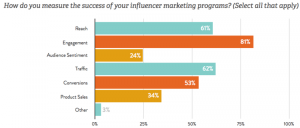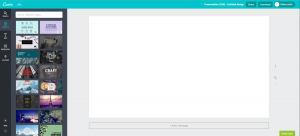— May 29, 2018
“The fintechecosystem that sprung up in the wake of the 2008 financial crisis has grown and matured. The early companies developing and marketing fintechapplications (fintechs) set out to disrupt or displace traditional banks. But fintechshave largely come to see banks as partners in providing innovative products and services, helping even to modernize banks’ internal systems. Now, partly due to the challenges of operating under a patchwork of state and federal laws and regulations, fintechsare considering becoming banks themselves,” according to Kevin Petrasic, a banking partner in the Washington, DC office of White & Case LLP.
In a recent article, Petrasic also stated that an industrial loan company (ILC) charter is an attractive option for fintechsto consider.His analysis is absolutelycorrect. An ILC is the perfectroute for the appropriate fintechoperations with a sound business plan. This charter requires the same consumer protections and compliance regulations as any other bank,while allowing access to a national customer base. This results in the infusion of credit for families and businesses across the country. ILCs are a win-win for Americans.

So what’s an ILC?
Let’s take a step back and define what ILCs are, why new charters for them have been frowned upon by the FDIC over the last decade, and the new potential forthem.
ILCs began in the early 1900s, with small niche lenders providing credit to their owncustomers, many low-to-moderate income workers who generally struggled to obtain consumer loans from commercial banks. Over the years, these industrial banks got larger (much larger) and began offering more products and services. Thirty-years ago, there were more than 120 industrial banks, according to the Federal Financial Institutions Examination Council. Today, however, there are less than 30 in operation, with a few transitioning to other banking structures.
So what makes ILCs stand out today? According to the National Association of Industrial Banks,industrial banks:
- Are state-chartered banks regulated to the same extent, and under the same standards, as all other banks by the FDIC and state regulators.
- Are among the safest and soundest banks in the nation—even when parent companies have financial problems.
- Have the highest capital ratios and profit margins.
- Are an important source of credit and banking services to diverse customer groups across the nation—often highly specialized and often serving severely under-served groups.
- Are subject to the Community Reinvestment Act, created to ensure that financial institutions provide for the credit needs of and provide service in their local communities.
- Are recognized for providing credit during the Great Recession, when other financial institutions were unable or unwilling to do so (due to a lack of liquidity or capital).
- Are full-service banks owned by commercial and non-commercial entities, making loans and investments but do not offer demand deposit (checking) accounts.
If you’ve financed a home improvement project with EnerBank, or have a retail credit card for stores such as Bed Bath & Beyond, Children’s Place or GameStop; or leased commercial equipment, you’ve used an ILC—and likely never even knew it.
You might be wondering, why would anyone be opposed to these types of companies? For years, ILC critics have been concerned about the mixing of banking and commerce. These critics fail to acknowledge that ILCs are subject to Sections 23A and 23B of the Federal Reserve Act, which severely limits the transactions between banks and their affiliates. In other words, an ILC cannot extend credit to consumers for the purchase of products of the parent company.
The FDIC has approved deposit insurance for only four institutions in the last ten years. This agency has sent definite signals that new state-chartered financial service organizations, including ILCs, are not welcome. This unfortunate stance is based on misinformation regarding state-regulated entities. Despite the outstanding performance of ILC’s, this charter has been caught in this net of unfair disparagement.
ILCs allow financial and non-financial companies to provide specialized lending products that traditional banks don’t typically provide. Industrial banks rely on the economics of specialization and cost-efficient delivery and offer products that typically would be unprofitable for traditional banks because traditional banks rely on relationship banking and on providing a variety of profitable services to a single consumer. Pitney Bowes Bank helps small business in the purchase of postage services. Optum Bank, owned by UnitedHealth Group, Inc., provides health saving accounts (HSA) and other healthcare financial services. And EnerBank USA, owned by CMS Energy Corp., provides attractive payment options for authorized contractors to offer to their customers as a way to pay for their home improvement projects.
These banks fulfill a vital role in providing employment and economic growth in their local communities and throughout the United States. At EnerBank, for example, we have grown our assets from $ 14 million in 2002 to more than $ 1 billion today, all by offering only one financial product—unsecured consumer installment loans for home improvements. All of our customers are obtained through home improvement contractors who have an existing relationship with us—thousands of small, family-owned businesses serving their customers with excellent home improvement solutions for their customers. We initially employed less than 30 people and now have approximately 300 employees. We invest millions of dollars each year to fund initiatives that provide affordable housing and our employees generously donate time to engage in charitable efforts that improve our community.
What does the future hold for ILCs?
Yes, the FDIC has approved few state-chartered applications, and no ILC charter in more than a decade, but we’re hopeful that with a new administration that will change. Frank Pignanelli, the executive director of the National Association of Industrial Bankers, told me recently, “These actions by the FDIC have created the situation wherein a majority of the financial transactions in this country are now outside the regulated banking sector. Fintech companies are responding to the demand for credit. Therefore, their push to be engaged in the regulated banking sector is an opportunity to bring back some of those financial transactions into the regulated banking sector with its added consumer protections.”
Pignanelli also stated, “There are large companies—very respected names across the county—who have been interested in the ILC charter for years but haven’t applied because of the inappropriate barriers created by the FDIC. But now we are definitely seeing a renewed interest. The momentum behind Fintech organizations seeking a charter, along with anticipated changes with the FDIC, will open doors for new ILCs.”
Business & Finance Articles on Business 2 Community
(130)
Report Post







